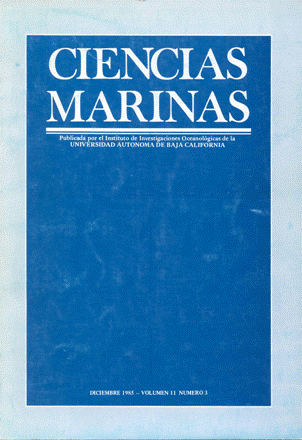Optimization of in situ culture of Bryothamnion triquetrum (Gmelin) Howe, using different fastening systems
Main Article Content
Abstract
Eleven in situ culture trials with the agarophyte Bryothamnion triquetrum were carried out during one year, using two fastening methods: rope fixation and free floating pieces inside net bags. Feasibility of farming this species has been shown when it is cultivated during short periods of time in summer. Polypropylene nets used as mechanical support restrain quite efficiently losses of seedling biomass. B. triquetrum can thrive inside hanging bags, reaching yields of up to 20.5 g m–1 day–1, with a mean sowing density of near 200 g m–1. Network opening, distance between the bags and size of the specimens suspended inside them, were factors that greatly influenced the harvestable crop. When seedlings were tied directly to the rope, specimen size and the thallus section used also influenced the final yield. Culture lapses were a determining factor in the yield with both methods.
Downloads
Article Details
This is an open access article distributed under a Creative Commons Attribution 4.0 License, which allows you to share and adapt the work, as long as you give appropriate credit to the original author(s) and the source, provide a link to the Creative Commons license, and indicate if changes were made. Figures, tables and other elements in the article are included in the article’s CC BY 4.0 license, unless otherwise indicated. The journal title is protected by copyrights and not subject to this license. Full license deed can be viewed here.

